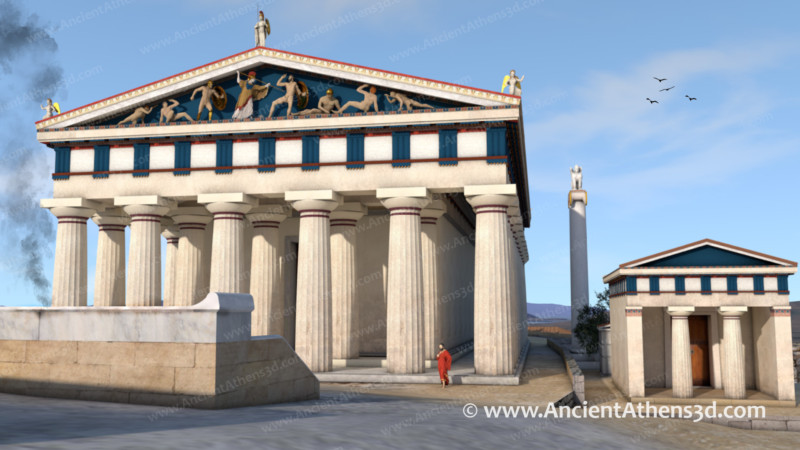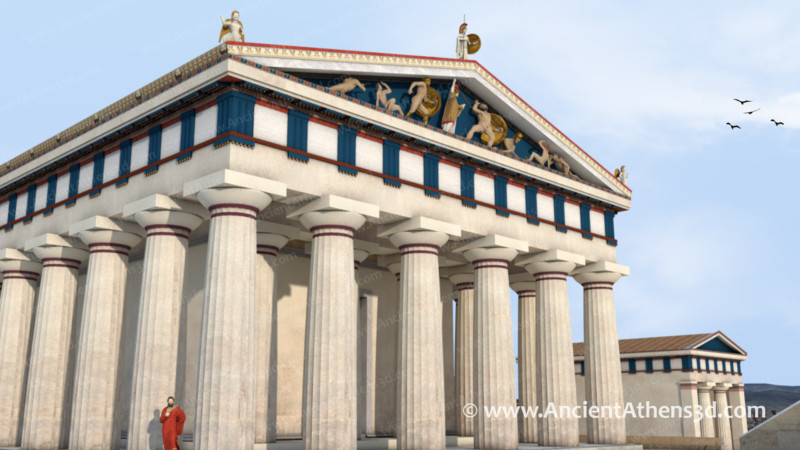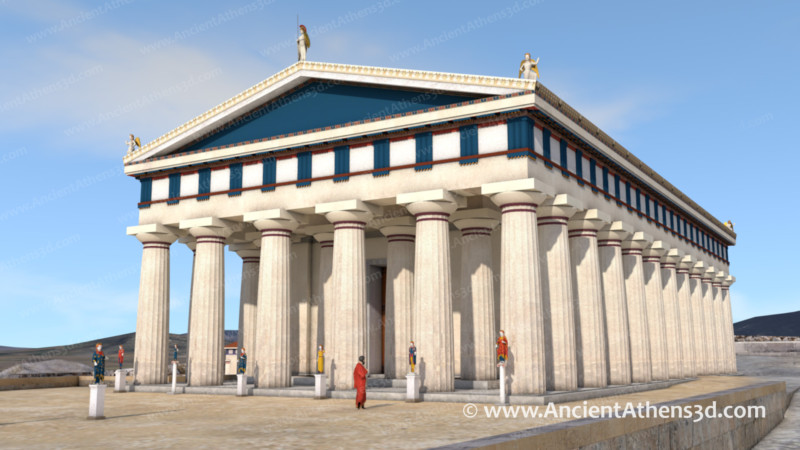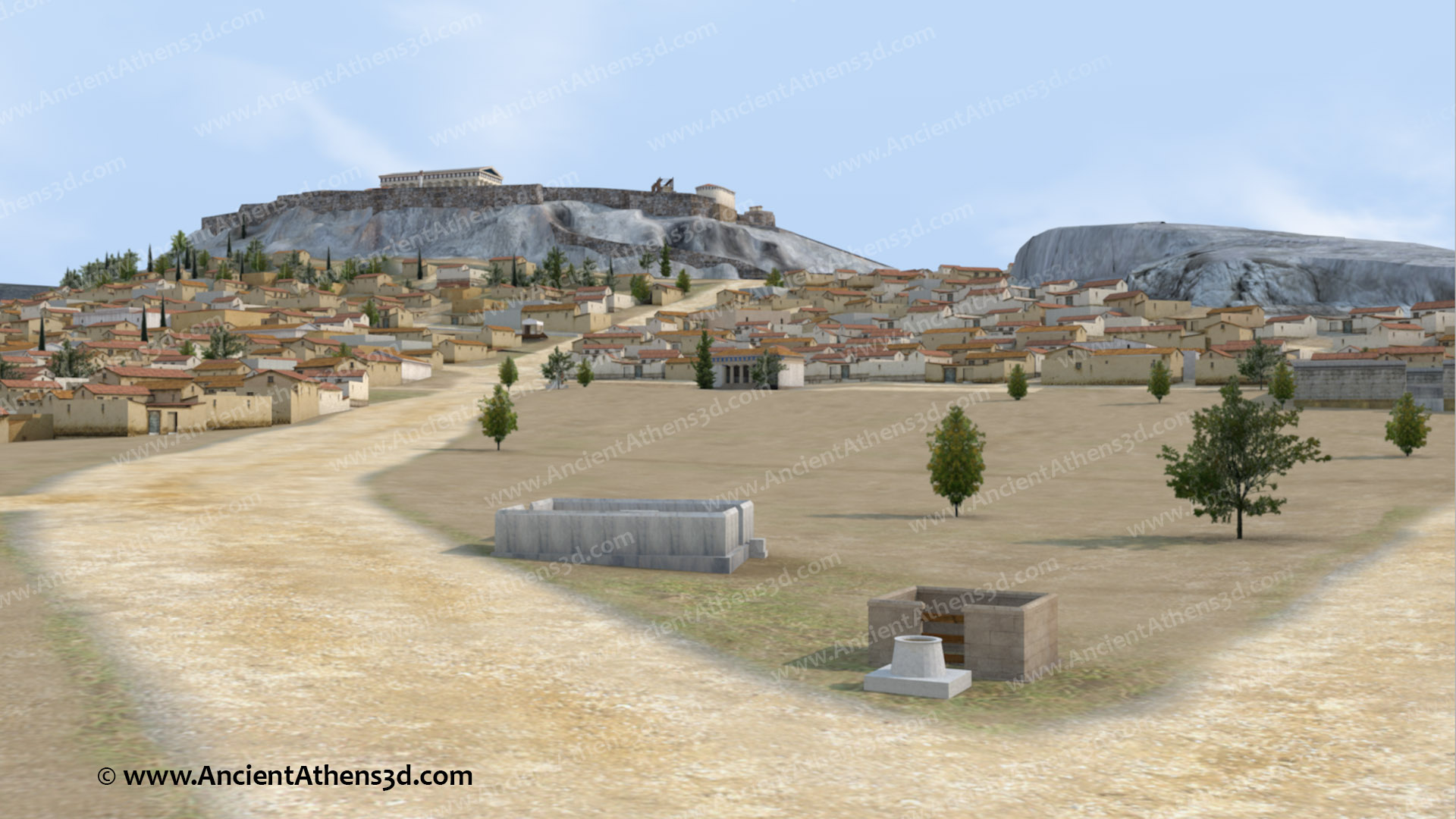| Special thanks to the professor of archeology Chrysanthos Kanellopoulos for his help for the following reconstructions.
The statues were based on the 3d models by Scan the World.
|
The archaic temple of Athena Polias was a six-column, peripteral temple with a four-column amphiprostyle cella. It was made of limestone except for the metopes, the cornices and the roof tiles which were made of Parian and Hymettus marble. The stone surfaces would be coated with fine plaster and the architectural elements were richly decorated with colorful motifs.
The pediments contained statues made of Parian marble, painted in vivid colors. One pediment (perhaps the eastern one) depicted an episode of the Battle of the Giants (the
Gigantomachy), a popular theme of the time. The goddess Athena fights against the Giants and defeats Enceladus with her spear. In the right and left corners, other giants have already fallen. These sculptures of high artistic quality, are probably works of the sculptor Antenor or of Endoeus. The western pediment probably depicted lions, such as those of the Hecatompedon temple.
The interior was divided into two main areas that did not communicate with each other. The eastern area was the main temple, where the cult statue of the goddess was housed. The western area (or
Opisthodomus) was divided into three rooms dedicated to different deities or heroes, who continued to be worshiped in the Erechtheion, which was built later.













